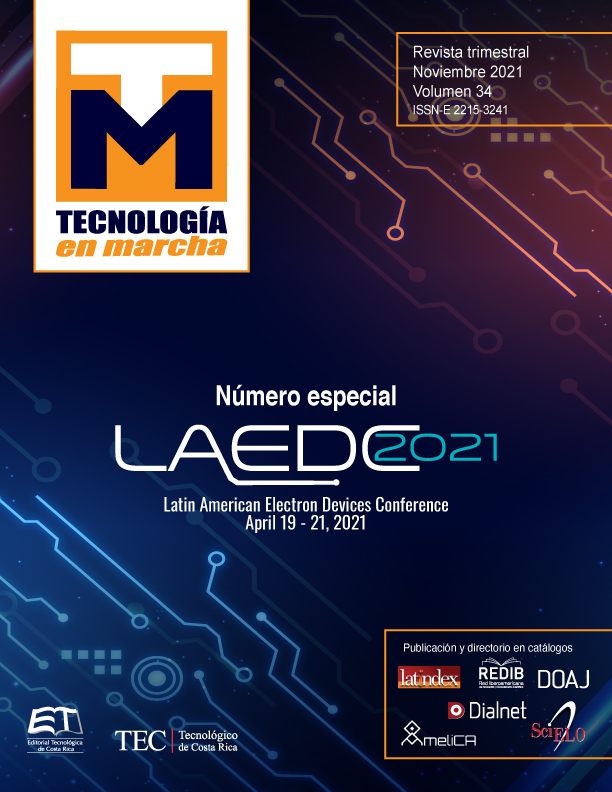Dual gate material (Au and Pt) based double-gate MOSFET for high-speed devices
Main Article Content
Abstract
Aluminium Gallium Arsenide (AlGaAs) is a semiconductor material used in the latest design of double heterostructure laser diodes. This semiconductor is mostly available in the arbitrary alloy form between Gallium Arsenide and Aluminium Arsenide. It is derived from the Tri-MethylGallium (TMG/TMGa), and Arsine (AsH3), both the chemicals are pyrophoric and toxic. The resistance is less between source and drain contacts in the case of AlGaAs so that it has been proposed as a material to grow contacts on Indium Phosphide (InP) layer. The AlGaAs uses an ion implantation model for a design purpose which lowers the thermal power while the operation of the device. The parasitic capacitance has to be taken care of while designing a device using this material since the capacitance affects much in the AlGaAs based devices. The average velocity of the electrons has been observed to be increased by 14.63 % in the Au-gate (gate-1) and Pt-gate (gate-2) material-based Double-Gate (DG) MOSFET compared to the Silicon-based DG MOSFET. This paves the way for higher electron mobility, in turn, it can be used in highfrequency device manufacturing. The proposed material can be used in high-speed hybrid applications such as HEMTs and radiofrequency devices for long-haul communication.
Article Details

This work is licensed under a Creative Commons Attribution-NonCommercial-NoDerivatives 4.0 International License.
Los autores conservan los derechos de autor y ceden a la revista el derecho de la primera publicación y pueda editarlo, reproducirlo, distribuirlo, exhibirlo y comunicarlo en el país y en el extranjero mediante medios impresos y electrónicos. Asimismo, asumen el compromiso sobre cualquier litigio o reclamación relacionada con derechos de propiedad intelectual, exonerando de responsabilidad a la Editorial Tecnológica de Costa Rica. Además, se establece que los autores pueden realizar otros acuerdos contractuales independientes y adicionales para la distribución no exclusiva de la versión del artículo publicado en esta revista (p. ej., incluirlo en un repositorio institucional o publicarlo en un libro) siempre que indiquen claramente que el trabajo se publicó por primera vez en esta revista.

